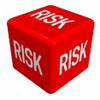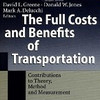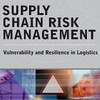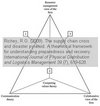 A promising title with promising content? Perhaps. If you are a supply chain or logistics professional, looking for a paper that discusses the intricacies of managing a supply chain in a disaster area, how to prepare and how to recover, this is NOT it. However, if you are a supply chain or logistics academic or researcher, looking for a new research strand or looking for a new theoretical approach to preparedness and recovery, then yes, this is it. The supply chain crisis and disaster pyramid by R. Glenn Richey Jr is a paper that falls in the category of academically intriguing, but practically maybe not so. That said, it may very well be a future seminal paper in supply chain disaster preparedness and recovery.
A promising title with promising content? Perhaps. If you are a supply chain or logistics professional, looking for a paper that discusses the intricacies of managing a supply chain in a disaster area, how to prepare and how to recover, this is NOT it. However, if you are a supply chain or logistics academic or researcher, looking for a new research strand or looking for a new theoretical approach to preparedness and recovery, then yes, this is it. The supply chain crisis and disaster pyramid by R. Glenn Richey Jr is a paper that falls in the category of academically intriguing, but practically maybe not so. That said, it may very well be a future seminal paper in supply chain disaster preparedness and recovery.
Disaster preparedness and recovery
The two recent earthquakes, first in Haiti, and then in Chile have made me think about supply chains and disasters. Most recently I reflected on public-private partnerships in disaster response and recovery and how resilience is a prerequisite for surviving disasters. My interest really started last year with the earthquake in Padang, Indonesia, where I highlighted that military and civilian supply chains must work side by side.
No bedrock
Because disasters and crisis situations are so hands-on and demand immediate action they are perhaps neglected by academia, and thus left to the professionals to sort it out. Or maybe not: This paper attempts to rectify this lack of theoretical foundation by developing a novel theoretical framework to support future research in supply chain disaster and crisis situations.
Four theories – one pyramid
The framework seeks to unite four theories by constructing a pyramid with 3 planes or sections; with each section representing a perspective linking three of the four theories:
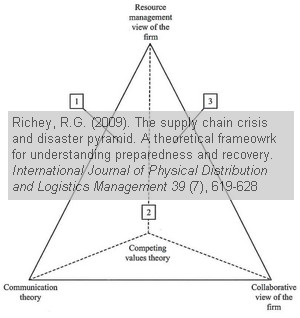
The three bases are made up of relationship management theories (collaboration), communications theory (communication) and competing values theory (contingency). The pyramid is topped by resource management as the capstone. If Lee can come up the Triple-A supply chain, maybe this can be the Triple-C?
Collaboration
Because there are always multiple players in supply chain disaster and crisis situations, collaboration will be the glue that holds organizations together, particular if one considers the tangled web of the extended supply chain. This web is likely to provide ample research opportunities.
Communication
Supply chain disaster and crisis situations demand effective communication. Examining issues such as bi-directionality, formality, modality, and frequency will be of serious importance and provide fertile grounds for research as private and public entities attempt to understand what, when, how and how much to communicate.
Contingency
Contingency theory is based on the premise that things change, and no supply chain disaster will be like the other. One of the strongest supporting theories that could ground the contingency element is competing values theory, by suggesting that one can simultaneously pursue various different and conflicting strategic goals, regardless of the situation.
Resource management
Resources play a vital role in supply chain partnerships and it will be important to investigate how they are employed, how they are impacted and how they interact with other resources, particularly in disaster and crisis situations. That includes human resources, physical and technological resources, informational resources and financial resources.
Three research planes
The authors suggest three research areas, built on the three planes of the pyramids, i.e. the interconnections between the theories.
1 – the independents
resources – competing values – communication
How do firms re(act) as disconnected and disinformed individual organizations?
2 – the proactive partnership
resources – communication – relationship management
How can firms develop communication and collaboration?
3 – the co-opetition resource
resources – competing values – collaboration
How do firms grow their situational awareness balancing when to compete and when to collaborate?
Conclusion
Initially, I was a bit dissatisfied with the article as I was hoping for a practically relevant article, that developed a new framework based on disaster and crisis experience. However, this is a purely theoretically framework, but it is a framework that is well founded, based on the literature review. It will be interesting to see how many researchers pick up on this article and develop the suggested research strands. You can count me in…perhaps.
Reference
Richey, R.G. (2009). The supply chain crisis and disaster pyramid: A theoretical framework for understanding preparedness and recovery International Journal of Physical Distribution & Logistics Management, 39 (7), 619-628 DOI: 10.1108/09600030910996288
Author link
- ua.edu: R Glenn Richey Jr
Related
- husdal.com: Public-private partnerships in disaster management
- husdal.com: Military and civilian supply chain collaboration


